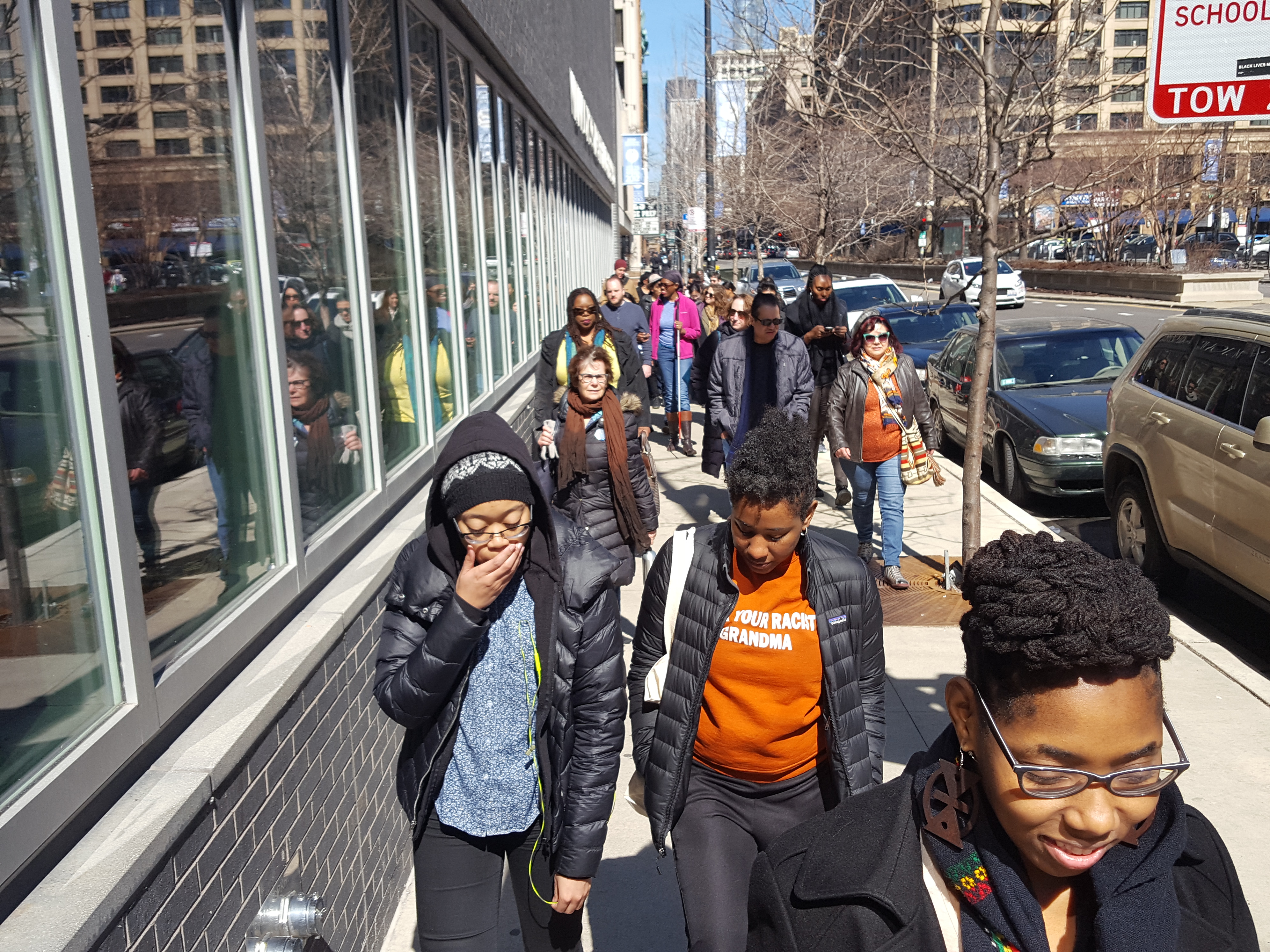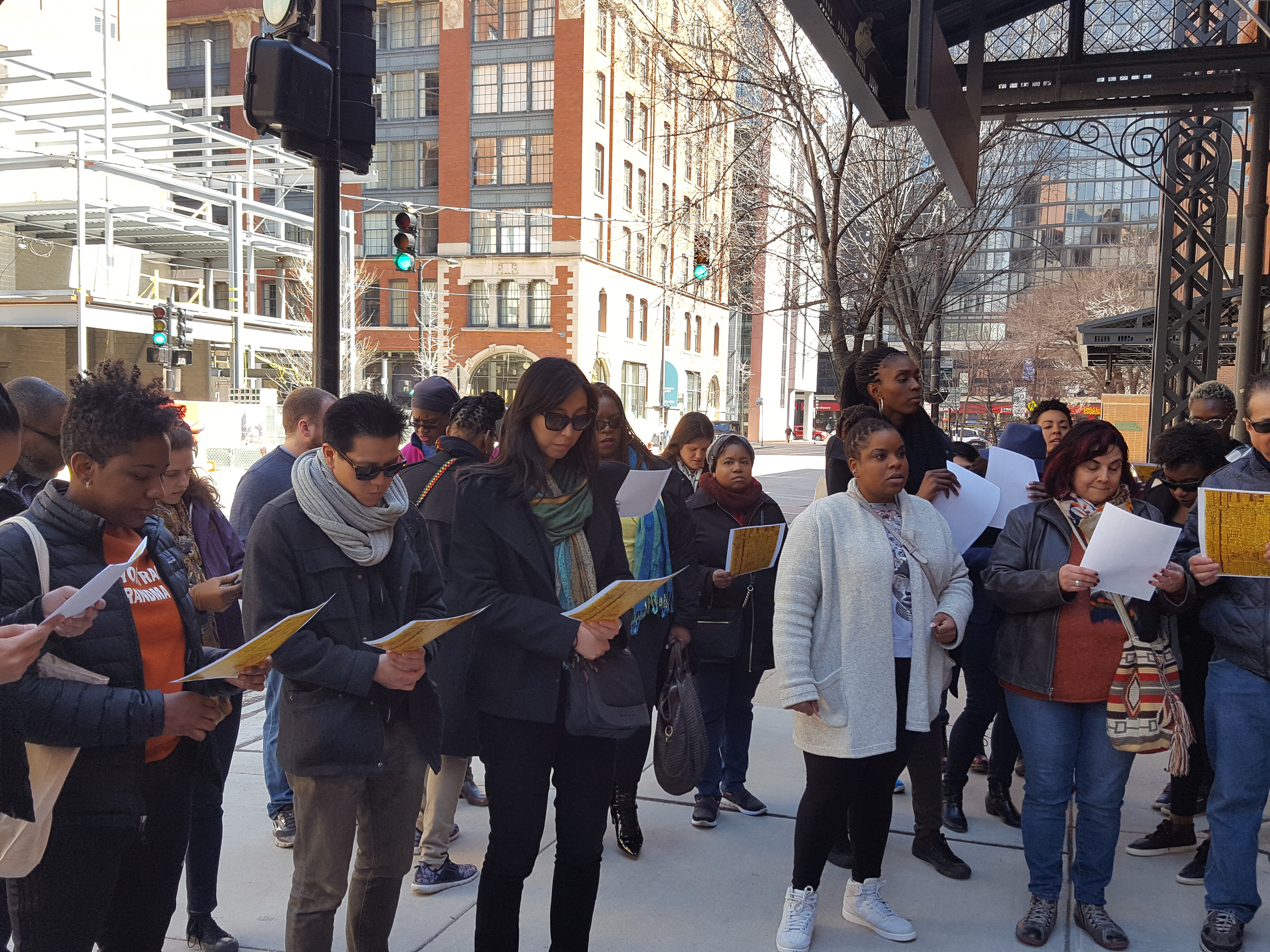 It’s not difficult to surmise that the innumerable contributions Black women have made to Black people and to the world will never receive its just recognition. Historically, sexism and racism have caused our nation’s history books and educational institutions to overlook dynamic Black women who have spent their life’s work improving their respective communities.
It’s not difficult to surmise that the innumerable contributions Black women have made to Black people and to the world will never receive its just recognition. Historically, sexism and racism have caused our nation’s history books and educational institutions to overlook dynamic Black women who have spent their life’s work improving their respective communities.
But two women on Chicago’s South Side are doing their part to lift up the historic work of Black women. On Sunday, March 18, Mariame Kaba and Essence McDowell reinvigorated life into the narratives of the city’s historic Black women by providing a tour of Chicago’s South Side that centered around Black women history makers. Kaba and McDowell, both who are educators, activists, and organizers, have created a project entitled “Lifting as they Climbed: Mapping a History of Black Women on Chicago’s South Side.”
On this rare sunny Sunday in March, Kaba and McDowell served as tour guides and historians to a gathering of approximately 50 people. The group––diverse and predominantly women––consisted of notable Chicagoans such as Chicago Tribune journalist Lolly Bowean, 49th ward Aldermanic candidate Maria Hadden, and Intersex activist Pidgeon Pagonis.
The tour began once Kaba and McDowell made their arrival on the corner of Harrison and State, at Jones College Prep. Here Kaba checked attendance and proceeded to give a history lesson on John Jones and Mary Jane Richardson Jones. The Jones’ were abolitionists who were immersed in the small community of 140 Black people in Chicago at the time. Mary Jones was a Black suffragette who welcomed renowned feminist icons like Susan B. Anthony into her home, and also used the house as a resting place on Chicago’s Underground Railroad.
McDowell then lead the group to Dearborn Station where tourists boarded a bus to visit the other local sites, but not before Kaba spoke on the importance of Dearborn Station.
Kaba described the deep history of how Dearborn Station acquired the nickname “The Levee.” “The Levee” was known as a vice district that covered a twenty square block span and, according to historian Elizabeth Schlabach, was home to 500 saloons and 500 bordellos housing 3,000 female workers. Black women in this period had limited options for employment. Many were forced into the informal economy selling their services in hairdressing, cooking, and sex. Kaba emphasized how sex work fed homes and aided Black women in their survival of a racist and sexist economy, despite their bodies being valued less than White women.
After boarding the bus, tourists received the colorful and informative “Lifting As They Climbed” guidebook. This book was equipped with a map of important points in the city that tell a story about Black women who have impacted the city’s history. It also provides short biographies for women designated at the mapped points. The guidebook can be a valuable tool and makes it possible for readers to conduct their own tours in the future.
The gorgeous Quinn Chapel AME Church is what followed Dearborn Station. Kaba stood happily on the church steps to give a brief but enlightening history of Emma Jane Atkinson and Amanda Jane Berry Smith. To both tour guides’ surprise, a parishioner invited the entire tour inside the church to receive a firsthand experience of what was once a place of refuge for enslaved Africans.
The bus moved further into Bronzeville and stopped at the 3435 S. Indiana Ave, the first home of The Chicago Defender.
Lolly Bowean, journalist for the Chicago Tribune, shared the history of the Defender’s beloved Ethel Payne. Payne worked for the Defender for over 20 years and with a resume covering many international figures, she became known as the “First Lady of the Black Press.” The talk of the Defender extended to mention a woman by the name of Zelda Jackson Ormes, one of the first Black syndicated cartoonists.
Other notable places on the tour included: the home of Gwendolyn Brooks, Ida B. Wells-Barnett’s house, Etta Moten’s house, and Lillian Armstrong’s house.
McDowell lectured on the celebrated history of famed artist and educator Margaret Burroughs. Not only did the tourists find out that Burroughs was responsible for the creation of the Du Sable Museum (originating in the basement of her home), but they were granted with the opportunity to walk inside the South Side Community Arts Center––the center that Burroughs played a heavy role in creating for Chicago’s Black community and home to much of her art.
The labor that Essence McDowell and Mariame Kaba put into this fascinating interactive snapshot of history is more than admirable. McDowell’s guiding work on the handbook made a sublime combination with Kaba’s infinite bank of knowledge of Black history. “Lifting As They Climb” was a superb learning experience that can embolden the pride one has for their city and the phenomenal women who gave it poetry, education, abolition, jazz, but most of all…their life.
Support “Lifting As They Climb” at: www.ChicagoBlackWomenTour.com
Black women walk to 'Lift While They Climb'



